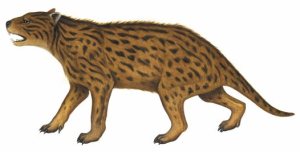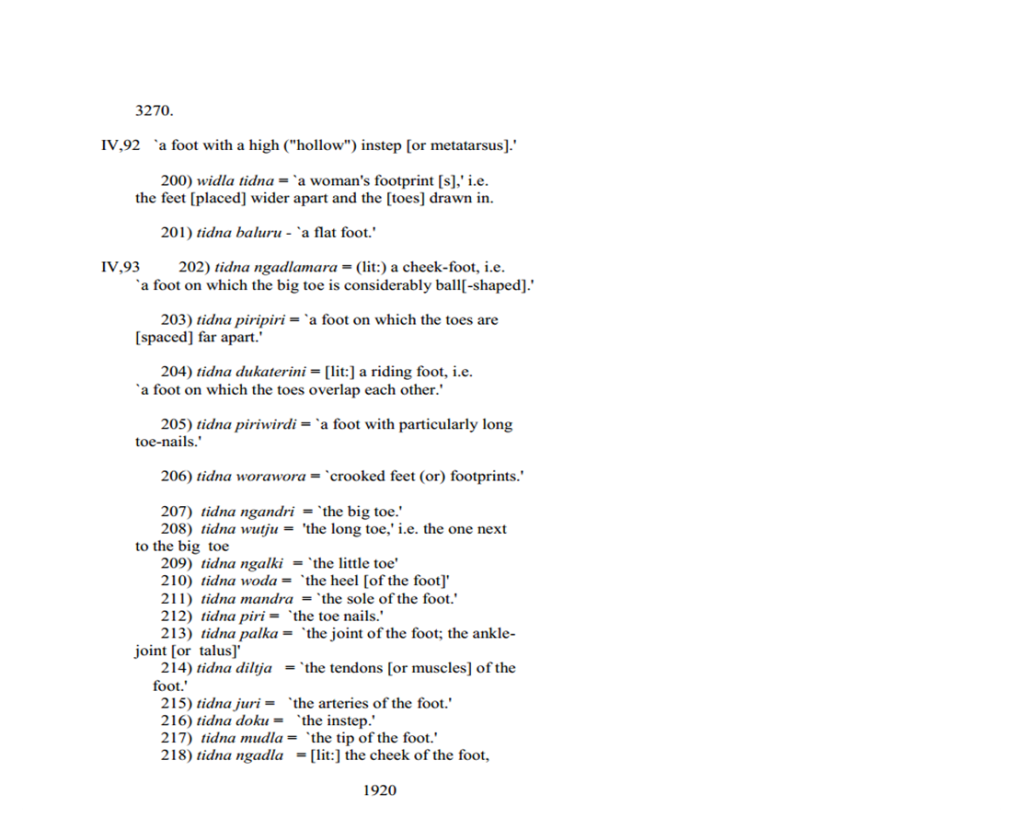[You can listen to a podcast of this blog post here]
In Dieri country east of Lake Eyre there are very few stones or rocks. The landscape is a combination of sandhills, claypans, salt lakes, and gibber plains (comprising small red stones) and there are no stone outcrops or hills. Traditionally, rocks for grinding stones (in Diyari called marda, the smaller upper grinding stone is called marda kuparru), that were used to make flour from seeds, were traded in from other groups. Grinding stones came from quite some distance away, such as Yandruwandha country near Innamincka or Kuyani country near Finniss Springs. They were exchanged for local products and the ochre (called pukartu) collected by the Dieri at Parachilna in the Flinders Ranges and carried on foot for over 400 kilometers (for more details see Jones 2007).

Because there were no rocks, Dieri and other groups in central Australia moulded clay balls (called tyaputyapu) for use as heat retainers in cooking. They would prepare the clay balls by heating them in hot ashes to fire them and turn the clay hard. These were then used to cook in an earth oven — people would dig a hole in the ground (called kurdu) and put the balls in it, and then build a fire (thurru) on top. When the clay balls were hot, the hot coals would be removed, and then food would be placed in the pit on top of the clay balls for cooking. This was then covered with a mixture of hot coals and sand, and left for 30 minutes or more until the food was ready to remove from the earth oven and eat.
There is evidence in the archaeological record that this method of cooking was used by the Dieri and other groups for many thousands of years (see this 2009 report by Don Hitchcock about Lake Mungo in New South Wales). The explorer Edward John Eyre gives a first-hand report of seeing this method of cooking in 1845:
The native oven is made by digging a circular hole in the ground, of a size corresponding to the quantity of food to be cooked. It is then lined with stones in the bottom (or clay balls where stones are unavailable), and a strong fire made over them so as to heat them thoroughly, and dry the hole. As soon as the stones are judged to be sufficiently hot, the fire is removed, and a few of the stones taken, and put inside the animal to be roasted if it be a large one. A few leaves or a handful of grass, are then sprinkled over the stones in the bottom of the oven, on which the animal is deposited, generally whole, with hot stones… laid on top of it. It is covered with grass, or leaves, and then thickly coated over with earth, which effectually prevents the heat from escaping.
After outsiders arrived in Dieri country, this method of cooking seems to have been no longer practised. Aunty Rene does not remember her mother (ngandri) or grandmother Amanya Frieda (kadnhini ‘mother’s mother’) cooking in this way, so probably by the end of the 19th century it had gone out of use.
On our recent trip to Killalpaninna, Michelle Warren and her daughter (ngathani ‘child of a woman’, the child of a man is ngathamurra) Dakota and her niece Mikayla (also called ngathani in Diyari) decided to recreate the traditional cooking method. They made tyaputyapu clay balls (about the size of a person’s fist) out of the local soil mixed with water, and fired them in the ashes of our cooking hearth (in Dieri thurru manya). Two days later they made an earth oven, and prepared it in the same way Eyre describes with the tyaputyapu (photo by Pete Howard, (c) 2002 TDAC, used with permission).

They prepared some damper (made of flour and water), and put it on the tyaputyapu, covered it with ashes and sand, and left it to cook. Around 45 minutes later we all have a lovely feed of cooked damper (ngayani dampa thayirna parraya ‘we all (not including you) ate the damper’). It was really good: matya manyu marla!
So, a traditional cooking practice, which had gone out of use over 100 years ago, was revived on Dieri country by Dieri women.
References
Eyre, Edward John. 1845. Journals of Expeditions of Discovery into Central Australia. London: T & W Boone.
Jones, Philip. 2007. Ochre and Rust: Artefacts and encounters on Australian frontiers. Adelaide: Wakefield Press.






